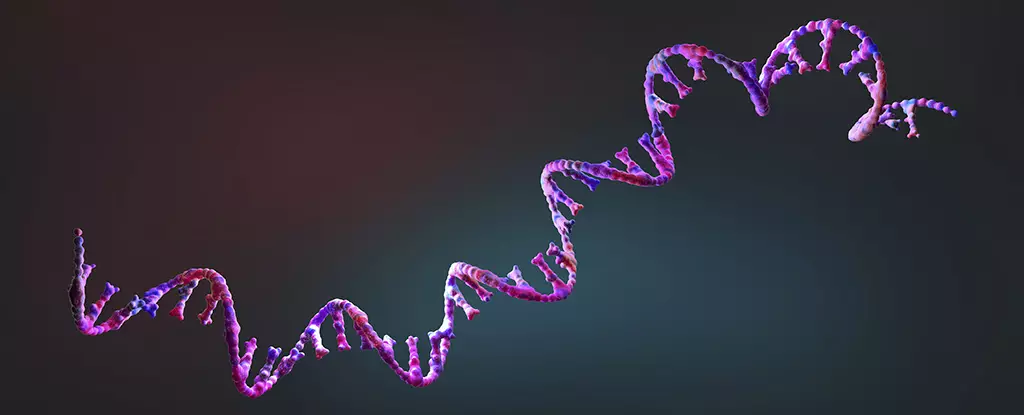The emergence of life on Earth remains one of the most profound mysteries of science. Researchers have long grappled with deciphering how simple molecules evolved into the complex structures required for living organisms. A recent experimental study conducted by scientists in Germany offers fresh insights into this enigma, specifically focusing on how highly reactive molecules found stability in primordial conditions. This article explores their groundbreaking work and considers its implications for our understanding of life’s inception.
The pioneering researchers recreated ancient Earth conditions within a laboratory setting, an ambitious endeavor that involved simulating the primordial soup where life is thought to have begun. At the heart of this study were RNA-like units—synthetic components capable of assembling in various ways, akin to the genetic material essential for life today. Chemist Job Boekhoven and his team at the Technical University of Munich posed a critical question: Can we mimic the conditions that led to life’s origins within a controlled environment?
By subjecting these RNA-like units to a source of high-energy molecules, they observed that these components constantly joined and disbanded, much like the chaotic nature of early Earth. Alone, these units lacked the ability to maintain bonds for extended periods; however, a transformative discovery was made when preformed DNA templates were introduced into the experiment.
The presence of short strands of DNA significantly changed the dynamics of molecular assembly. Instead of merely floating apart, complex molecules began to form and, crucially, persisted within this RNA-DNA system. The research revealed that the templates facilitated the creation of more stable double-stranded configurations. “The excitement lies in the fact that double strands lead to RNA folding, which then opens the possibility for catalytic activity,” explains Boekhoven.
This development is not just a matter of forming stable structures; it implies an evolutionary process akin to natural selection had commenced. The study uncovered a plausible mechanism through which simple molecules could not only join together but also adapt, replicate, and survive, thereby laying down the foundational principles for the emergence of life.
With the observation that these complex structures could influence the surrounding membrane’s properties, the study opens up further questions about the evolution of cellular membranes and how molecules could interact in a primordial environment. The DNA templates lead scientists to contemplate additional questions regarding their origins. What processes could have led to the formation of such molecular templates in the first place? This question remains open for further investigation, hinting at a myriad of possibilities in the formation of life’s building blocks.
Boekhoven emphasizes the broader significance of this research, noting, “We are currently exploring whether it is possible for RNAs to develop their own complementary strands.” This line of inquiry underpins the complexity and interconnectedness of molecular evolution, offering tantalizing prospects for understanding not only the initial spark of life but also its subsequent adaptations.
The quest to comprehend the origins of life is rife with challenges and unanswered questions. Yet, studies such as this one provide valuable leverage in our understanding of how complexity could arise from simplicity. By successfully simulating ancient conditions and demonstrating how molecules could stabilize and evolve, scientists are piecing together a narrative that offers insights into the very essence of life.
The fusion of RNA and DNA-like components under the right conditions showcases the ingenuity of scientific methods that allow us to practically replicate processes thought to have taken millions of years in mere experimental hours. As we stand on the precipice of unraveling life’s earliest secrets, research in this domain not only sheds light on our origins but also reinforces the resilience and capability inherent in scientific exploration. The story is far from over; with each study, we draw closer to understanding the remarkable journey from inanimate chemistry to living complexity.

Leave a Reply